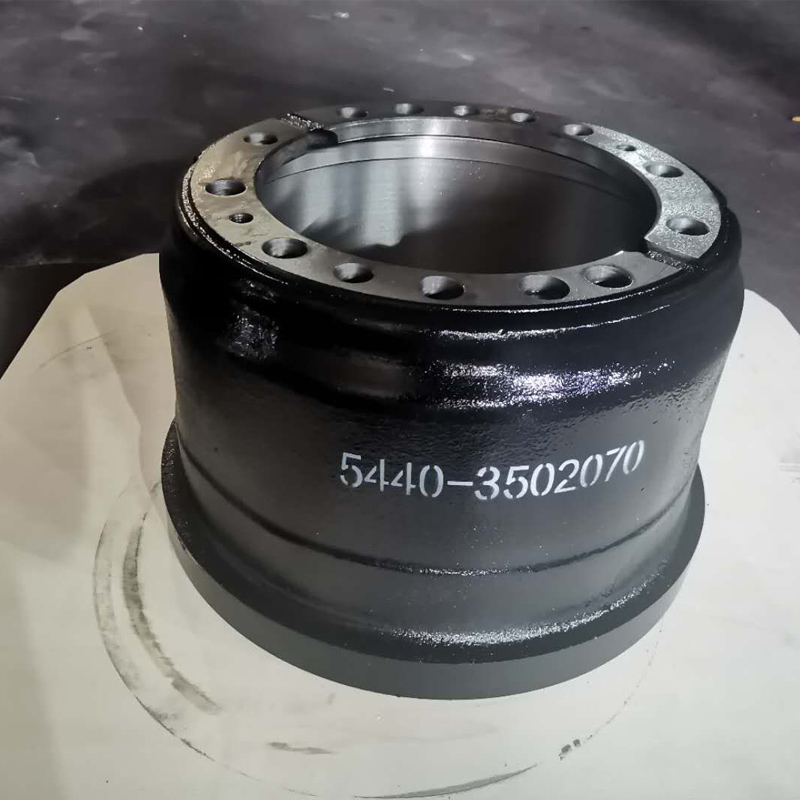Aug . 14, 2024 15:38 Back to list
Understanding Wear Limits for Semi Truck Brake Drums to Ensure Safe Operation and Maintenance
Understanding Semi Truck Brake Drum Wear Limits
In the world of trucking, safety and reliability are paramount. One of the most critical components of any semi-truck's braking system is the brake drum. These drums play an essential role in the vehicle's ability to come to a stop safely, especially given the weight of cargo trucks typically carry. Understanding the wear limits of brake drums is crucial for both drivers and fleet managers alike to ensure efficient and safe operation.
Brake drums function by working in conjunction with brake shoes to create friction that slows down or stops the vehicle. Over time, with consistent use, these drums can wear down due to the high heat generated during braking and the friction from brake linings. Each semi-truck comes with manufacturer specifications detailing the acceptable limits for wear on brake drums, often measured in millimeters or inches. It's essential to adhere to these specifications to ensure optimal performance and safety.
Understanding Semi Truck Brake Drum Wear Limits
To assess the wear on brake drums, drivers and maintenance personnel should regularly inspect the braking system. This process usually involves measuring the diameter of the drums with specialized calipers. If measurements exceed the specified wear limits, it's imperative to replace the drums immediately. Additionally, visual inspections can reveal other forms of wear such as cracks, scoring, or discoloration, which may also warrant replacement.
semi truck brake drum wear limit

It's also important to consider that uneven wear on brake drums can lead to imbalance in the braking system, causing the truck to pull to one side while braking. Such issues not only compromise safety but can also lead to more accelerated wear on other braking components, such as wheel bearings and brake shoes. Regular maintenance, including the proper adjustment of brakes and replacement of components, is essential to prevent such problems.
Another factor influencing brake drum wear is the driving habits of the truck operator. Aggressive driving, sudden stops, and overloading the vehicle can increase wear rates. Fleet managers should emphasize the importance of safe driving practices and regular maintenance checks to prolong the life of brake drums and other brake components.
Moreover, it’s crucial to remain compliant with legal safety regulations that govern commercial vehicle maintenance. In many regions, periodic inspections are mandatory, and brake performance is one of the primary focuses of these checks. Non-compliance can lead to fines, increased insurance premiums, and, most importantly, pose grave safety risks on the road.
Ultimately, understanding and adhering to semi-truck brake drum wear limits is essential for operational safety and efficiency. Regular inspections, proper measurements, and proactive maintenance practices will help ensure that both drivers and trucks can operate under optimal conditions. By prioritizing brake maintenance, trucking companies can protect their assets while also fostering a culture of safety that contributes positively to the entire industry. As brakes are undeniably a truck's lifeline, giving them the attention they require is not just a best practice; it is a responsibility that every operator must take seriously.
-
Scania Brake Drums: OEM Quality for Optimal Safety & Durability
NewsAug.16,2025
-
R.V.I: Advanced Remote Visual Inspection for Precision
NewsAug.15,2025
-
Discover HYUNDA: Innovative Vehicles, Equipment & Solutions
NewsAug.14,2025
-
R.V.I: Unlock Advanced Insights & Real-time Performance
NewsAug.13,2025
-
Kamaz Brake Drum: Durable & Reliable for Heavy Duty Trucks
NewsAug.12,2025
-
Heavy Duty Iveco Brake Drum - Premium Quality & Safety
NewsAug.11,2025
